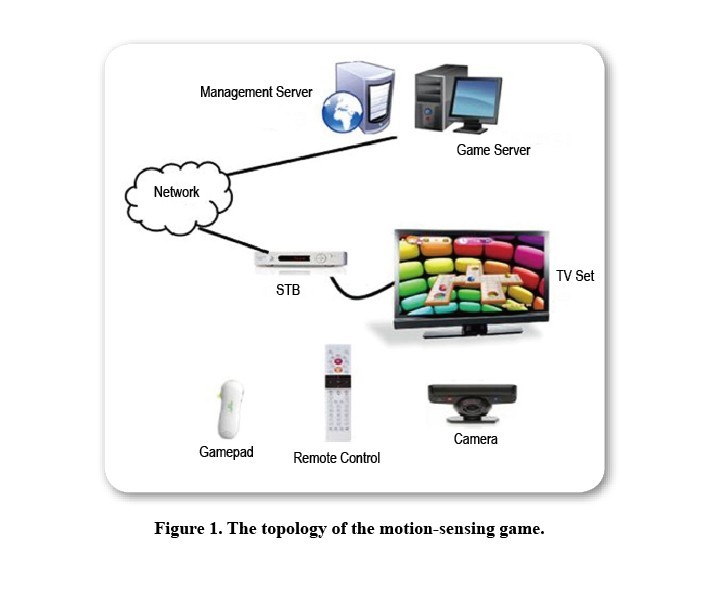STB-based Motion Sensing Game Solution
With the development of “triple play” and e-Home, manufacturers have stepped up competition to develop set-top boxes (STBs) and TV sets. New high-definition, 3D, and Internet TVs have appeared on the market. However, many of the functions found in these new products are those of traditional PCs, and it is hard to attract new customers with old functions. In the home entertainment market, developers and operators will profit by a multi-business mode and providing customers with new functions that are different from those of an ordinary PC.
Demand Analysis
What kind of services can be provided for added value? In “triple play,” the operator is responsible for gaining profit for the game developer and manufacturer also. Obtaining a high return from video and information alone is difficult. The key to generating profit is to fully mobilize resources to develop an industry environment in which customers, developers and operators all take an active part.
STB can be used not only for watching HD television but also for playing motion sensing games and surfing on the Internet. The STB-based motion sensing game is fun for everyone.
ZTE's STB-based Motion Sensing Game

ZTE has introduced an STB-based motion sensing game that brings together game-manufacturers and operators. ZTE has created two kinds of STB motion sensing game:
● A 3D gamepad motion sensing game. A bluetooth receiver and motion sensing gamepad with accelerometer and nine-axis gyroscope are used. You can play against a virtual player or against another player. The game is 3D. STB available: B700V3 and above
● 2D camera motion sensing game. A camera is used to capture the movements of the player. The virtual objects on the screen are 2D. STB available: B600V4A/B700V2/B700V2A
The game platform, including the game server and management server, is deployed in the operator’s computer centre on partial nodes. The motion sensing gamepad and camera are connected to the set-top box. When you choose a game from the electronic program guide on the game channel, you enter a virtual motion-sensing game hall.
When you enter the game hall, a request for a login is sent to the game server. The game server sends an authentication request to the operator’s authentication server to verify the user. After the user is verified, the game server allows log in and retrieves the user’s game file. With some games, the user must pay before playing. The player’s game top-up is integrated with operator’s billing system. The money collected by the operator is divided between the operator, ZTE and the game developer.
Memberships, shopping, and social networking can be added to the game hall, which increases fun and cohesion.
● The game center. The user has subscribed for the games list and can access the center to play games.
● Fitness program. The user can draw up his own fitness program.
● Social community. Friends management, reception and delivery of messages.
● Game mall. The unsubscribed games list (including props). User can subscribe and top up for these games.
● Membership management. Add or delete family members. Game files for every member are different.
● System settings. Connection settings for motion sensing peripherals.
ZTE’s STB motion sensing game uses software development kit open development protocol. It provides the game manufacturer with an easy implantation development environment.
It also provides open and unified interfaces for user login, authentication, game browsing, game downloading, purchases and top-up so that it is convenient to access. Games can be deployed on the download platform; when the user wants to play, they can directly download the game and let it run in the box, which is convenient for upgrade and can prevent piracy. Online upgrades are also available to support new motion sensing games.
ZTE’s STB motion sensing game creates profit for the operator, game developer, and hardware manufacturer. The operator provides the audio service platform and Internet access; ZTE provides the STB motion-sensing hardware; and the game-manufacturer provides motion sensing game. The motion-sensing game can be administered by an operator alone or in conjunction with ZTE’s professional operation team.
The motion sensing game is one of the value-added services on the digital television service portal set up by the operator. The operator manages game upgrades, billing and charging, advertisements, competitions, and marketing in a unified way, and the benefits are shared with content providers.
With the motion-sensing game, an operator can profit from
● seizing market share and selling game peripherals and top-ups
● selling new games and virtual props used in the game
● selling advertising on the game platform.